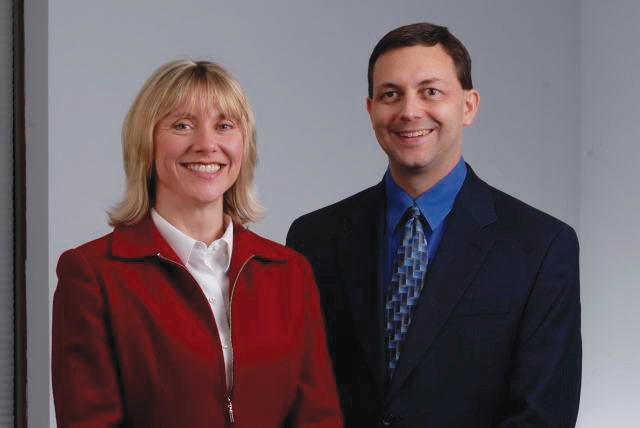Great Practices – Simons Bitzer & Associates
Firm Contact & Firm Profiled: Raegan Potter, Business Development & Marketing Specialist, Simons Bitzer & Associates
No longer the ugly stepsister to sales, one progressive firm spotlights the value of a well-conditioned marketing program
For too long, marketing has lurked in the shadows, ignored and rejected. The traditional thought is that marketing is a non-billable activity, and therefore a non-necessity. In reality, marketing drives sales. Well-planned and consistent promotion of services not only keeps a sales funnel full, it helps firms build a strong brand and stay in front of prospects and clients.
The firm of Simons Bitzer & Associates gets this … completely. And, man, can that ugly stepsister perform. Encore!
A Refreshing Change in Mindset
When Raegan Potter, Business Development and Marketing Specialist at Simons Bitzer & Associates interviewed for her position, she recalled being delightfully surprised at the principals’ view on marketing.
“I was braced to hear what I’ve heard numerous times: Marketing is a nice-to-have, not a need-to-have,” Potter stated. “Their positive outlook on marketing was refreshing.”
Principals Greg Simons, CPA and Barb Bitzer, CPA are dedicated proponents of marketing and branding. They not only understand the effects of a strong program, but also the value of communicating consistently and frequently. Staying in front of an audience year round is the key to bringing in new business and maintaining existing clientele.
“When I hired in, the economy was exceptionally bad,” Potter recalled. “Yet Greg and Barb were dedicated to implementing a comprehensive marketing program. They really understood the importance of ongoing business promotion and were willing to spend the dollars … even during an economically slow period.”
The Test & Measure of a Good Marketing Program
Potter admits that the first year was a tough one. She not only had to get up to speed on the tax and accounting profession in general, but also dedicated a great deal of time to evaluating the firm’s current clientele and testing marketing efforts.
“One of the most effective ways to market is to understand who your ideal clients are,” Potter explained. “My first directive was to evaluate the firm’s existing pool of clients in order to identify the type of prospects we wanted to go after. I primarily looked at revenue and industry to pinpoint ideal target markets.”
Once Potter knew the “who” (audience), she was in a better position to develop the firm’s message. From there, she concentrated on testing and measuring campaigns for effectiveness.
“You can’t just sit down and write a marketing plan for the entire year,” Potter stated. “You have to implement a program a little at a time, pausing to measure and test elements.”
Not every marketing initiative is going to be a huge hit. That’s why it’s critical to test campaigns and measure success along the way. Thorough analysis is the best way to identify what is working and what needs to be 86’d.
“A lot of firms would view the analysis part of marketing as non-billable, and therefore not needed. The principals are huge proponents of measuring campaigns. In fact, they insist on it,” Potter said.
During the first year, Potter closely monitored activity in all areas, including email campaigns, firm newsletter, networking events, and direct mail. Along with the principals, she reviewed key performance indicators such as:
- Click-thru rates — what items did recipients click to view?
- Open rates — was the communication opened at all?
- Forwards — what initiatives did recipients forward on?
- Social forwards — what items did recipients forward via social media channels (i.e., Twitter, Facebook, LinkedIn)?
From this data, Potter was able to better separate the popular campaigns from the laggards. Data also provided valuable marketing intelligence such as what day of the week yielded better results (Tuesdays and Thursdays tend to be best; just before a holiday tends to be bad) and what content/messages resonated with target audiences.
“You can’t know what direction to take if you don’t know where you are,” Potter stated. “By measuring campaigns, you can better determine your next move. Randomly sending out marketing campaigns without proper analysis will leave you spinning your wheels.”
Choreographing Multiple Initiatives
Marketing is diverse … with many channels and initiatives from which to choose. The key is to create a program that is well choreographed — one where initiatives complement one another and flow. On the marketing stage, there’s a big difference between fluid dance and a lot of jumping around.
Through vigilant testing and a fair share of trial and error, Potter has developed a strong marketing plan.
“We have many elements that make up our program — from scheduled networking events and hosted educational workshops to monthly email campaigns and direct marketing initiatives,” Potter explained. “The firm’s core services [CFO and controllership] are year-round offerings that require ongoing marketing.”
%3
Thanks for reading CPA Practice Advisor!
Subscribe Already registered? Log In
Need more information? Read the FAQs





